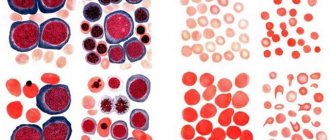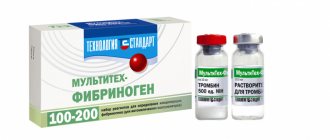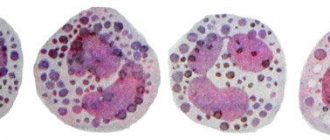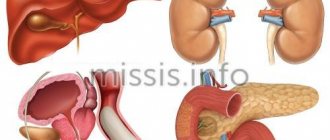Elevated cholesterol levels now occur even in people under 30 years of age. As a result, atherosclerosis may develop and the blood supply to tissues may be disrupted. Therefore, it is recommended that all adults have their cholesterol levels checked every 5 years, and after 40 – every year. This will help to detect deviations from the norm in time and take action. When a doctor directs a patient to check cholesterol, how this substance is designated in tests, he does not say. Of course, a specialist can decipher the results better. But everyone needs to know where to look for cholesterol indicators on the form and what their norms should be.
Why do you need a blood test?
The state of human health greatly depends on the composition of the blood. Therefore, tests help the doctor make a diagnosis or prevent serious pathologies. To do this, a general analysis is performed to evaluate the cellular composition of the blood that is taken from the finger. Biochemical analysis provides detailed information about the presence of hormones, enzymes and other substances. It definitely includes cholesterol.
This substance belongs to lipids. It is used to build cell membranes, participates in the synthesis of hormones, digestion and removal of toxins. Therefore, the body needs cholesterol for normal functioning. But it is beneficial only when the amount is within the normal range. If this level rises, the excess accumulates in the vessels. Because of this, coronary heart disease develops, blood pressure rises, and cerebral circulation is impaired.
To avoid dangerous consequences, every adult is recommended to regularly check their cholesterol levels. A doctor may also prescribe a blood test in the following cases:
- people with a hereditary predisposition to cardiovascular diseases;
- when diagnosing atherosclerosis or the causes of high blood pressure;
- for liver diseases;
- diabetes mellitus;
- for diagnosing diseases of the endocrine system;
- in case of metabolic disorders;
- to assess the effectiveness of the treatment.
A person himself can ask for a referral for such a blood test if he experiences frequent malaise, decreased performance, or worsened mood. Increased cholesterol levels may be indicated by memory impairment, heaviness in the legs, and the appearance of yellow spots under the skin. In addition, it is recommended to donate blood annually even if you feel normal in the following cases:
- smoking;
- being overweight;
- frequent increases in blood pressure;
- people who move little;
- those who are over 40 years old.
Cholesterol designation
Usually, when diagnosing various diseases or for prevention, a biochemical blood test is taken. It allows you to determine your total cholesterol level. It is designated Chol on the form. Its norm differs in people depending on age, type of activity, in men and women. If the results exceed 5.2 mmol/l, the doctor recommends taking an extended lipid profile.
In addition to total cholesterol, it reflects several more indicators:
- high density lipoproteins – HDL;
- low-density lipoprotein LDL;
- very low density lipoproteins;
- triglycerides;
- atherogenic index.
Latin is used to denote these indicators. The first letters of the Latin name or abbreviation are used. It is difficult for people who do not know Latin to understand what certain symbols mean. Therefore, a doctor should decipher the tests.
A biochemical test is taken from a vein in the morning on an empty stomach. For the results to be reliable, you should not eat anything 12 hours before donating blood; you should give up fatty foods and alcoholic beverages for a week. Before the analysis itself, you should not smoke, you need to avoid physical activity and calm down. Blood is taken in an amount of 5 ml and sent to the laboratory for testing.
Why is analysis necessary?
Doctors' recommendations regarding cholesterol levels boil down to the fact that anyone under forty should check it once every five years, and over forty - once every three years. Why is this necessary?
Do not self-medicate. Consult a specialist:
Cholesterol levels affect many processes in the body - digestion, the production of certain hormones and the creation of new cells.
Normally, cholesterol provides great assistance to the body; it needs it just like its other components.
The main thing is that it is within the normal range, because deviations from it lead to many serious consequences. The insidiousness of elevated levels is that a person does not feel this elevated level in any way, which is why even absolutely healthy people need to monitor it and keep it normal.
You get promotional code OZON - 300 points for your first order. OZONAPIE1I (applied in the cart)
The doctor sends the patient for blood biochemistry to determine cholesterol levels in the following cases:
- for medical examination purposes, for prevention;
- to track the dynamics of decline during drug therapy;
- in identifying pathologies of lipid metabolism;
- during examination in a hospital setting;
- for diagnosing diseases of the endocrine system;
- diabetics;
- for liver diseases;
- for diagnostic purposes of studying atherosclerosis;
- people with an increased risk of developing cardiovascular diseases.
For the most reliable picture of the patient’s condition, a lipid profile is needed. It consists of total Chol, HDL, LDL, AI and triglycerides.
The atherogenic index (AI) is the ratio of HDL and LDL. Using this index, the dynamics of decline during drug treatment can be seen.
Total cholesterol (Chol) consists of two indicators: high-density lipoproteins (HDL) and low-density lipoproteins (LDL), the analysis also reveals the ratio of these two indicators.
LDL is so-called bad because it leads to the formation of atherosclerotic plaques, and accordingly increases the risk of developing atherosclerosis, stroke and heart attack.
HDL is called good cholesterol because it is involved in many vital processes in the body, and also participates in the production of certain hormones, rids the body of “bad” cholesterol, absorbs fat-soluble vitamins and prevents the formation of plaques.
If total cholesterol is low, this indicates disorders in lipid metabolism or psychophysical disorders. If it is elevated, it means there is a high risk of developing atherosclerosis or diabetes.
Triglycerides are an important source of energy; in other words, they are neutral fats that enter the body through food and are synthesized in tissues. Triglycerides provide valuable additional information in the diagnosis and treatment of heart attacks, strokes, thrombosis, atherosclerosis and other diseases.
Explanation of meanings
When receiving a form with the test result, many patients do not understand what is written there. Deciphering a blood test for cholesterol is complex, since many factors and several indicators must be taken into account at once. For example, if Chol is elevated due to LDL and triglycerides, it will need to be lowered. But if this happened due to an increase in HDL, there is nothing to worry about, since this substance frees blood vessels from cholesterol plaques. Therefore, only a doctor can determine whether correction of cholesterol levels is necessary.
Chol or TS
The level of total cholesterol is designated in tests as Chol or TC. This indicator is necessarily included in any biochemical analysis. It is determined for preventive or diagnostic purposes. It shows how much of it is present in the blood. This allows us to draw a conclusion about the state of metabolic processes. The normal level for an adult should be no more than 5.2 mmol/l.
Cholesterol is synthesized in the liver and from there enters the blood. This substance is soluble only in fats, so it is not present in the blood in free form, but is part of lipoproteins - compounds of cholesterol molecules with proteins.
TRIG or TG
In women, the transcript of a blood test for cholesterol often contains indicators of the amount of triglycerides. They are designated by the letters TRIG or TG. It is a combination of fatty acids and glycerol. They come from fatty foods and are found in adipose tissue. If there are a lot of them, this threatens to block blood vessels. An increase in TG levels often occurs in diabetes mellitus. In healthy people, their amount should not exceed 1.7 mmol/l.
HDL
This designation determines the amount of high-density lipoprotein. Their main job is to bind LDL and transport it to the liver for disposal. Therefore, HDL cleanses blood vessels from cholesterol plaques. Therefore, their number should not be less than the norm. And in people with cardiovascular diseases, the higher it is, the better. To prevent the development of atherosclerosis, the HDL level should be at least 1.6 mmol/l.
VLDL
These letters indicate very low density lipoproteins. They contain a large number of cholesterol molecules, so they are often deposited on the walls of blood vessels. Low density lipoproteins are formed from them. It is a building material and a source of energy. The amount of VLDL should not be more than 1 mmol/l.
LDL
These letters indicate the level of low-density lipoprotein. This compound is called “bad” cholesterol. It should not be more than 3.5 mmol/l. A slight increase in the amount leads to its accumulation in the vessels. This happens when a lot of fat comes from food, because LDL is still produced in the liver. Narrowing of the lumen of blood vessels can lead to increased blood pressure and disruption of blood supply to tissues.
I.A.
To assess the risk of atherosclerosis, it is also necessary to determine the atherogenicity index. It is designated IA. Sometimes you can see the letters KA or CATR. This is the ratio of low and high density lipoproteins. The atherogenicity index is calculated based on the remaining results. You need to subtract the amount of HDL from the total Chol, and then divide the result by HDL. It should be less than 3. This means that the amount of high-density lipoproteins is such that they cope with the removal of “bad” cholesterol.
What does cholesterol consist of?
Although Chol, like all other medical terms, is denoted by Latin letters, its origin is from the Greek language, where the name was formed from two words that together give the phrase translated into Russian as solid bile. It was so named because it was first discovered in gallstones.
Its generator is our liver, which produces the main part of it; the body receives the rest through food.
Cholesterol is made up of a mixture of high-density lipoproteins (HDL) and low-density lipoproteins (LDL). If there is an imbalance between this connection, many serious diseases can develop.
The bulk of lipids are found in the brain, liver and muscles.
Cholesterol circulates through the cardiovascular system along with the blood. It is responsible for the creation of new cells; without it, the cellular structure will not have the proper density. In addition to this important function, cholesterol has another mission - it is involved in the production of the main sex hormones - testosterone, estrogen and cortisone.
It transports antioxidants to the brain, which ensures normal nutrition of brain cells and oxygen saturation. Circulating in the blood, it helps the absorption of fats. But for all the above positive functions in the body, Chol should be within the specified limits.
How does cholesterol affect your health?
This component is indispensable in the body system. When its level is normal, new cells are formed, since it is an important component in their formation, necessary and important sex hormones are produced, which are responsible not only for the human reproductive system, but are also an important factor influencing his mood and general well-being .
The brain functions normally, since it supplies it with oxygen in a timely manner and in the right quantity, the digestive organs work well, because cholesterol is involved in the process of breaking down fats.
If the level of Chol in the blood is too high, then this leads the body to a whole series of provocations of diseases, the most dangerous and having the greatest risk of death are: atherosclerosis, heart attack and stroke.
If the Chol level is reduced, this is also not good, as it can lead to the development of anemia and various disorders in lipid metabolism.
Therefore, it is important to take the necessary tests in a timely manner.
Table of normal values
When a detailed blood test for cholesterol is prescribed, the interpretation must take into account many factors. The norm for adults is shown in the table:
| Index | Amount in mol/l | ||
| Normal | Border | Dangerous | |
| Total cholesterol | 5,2 | 5,2-6,5 | More than 6.5 |
| Triglycerides | Less than 2 | 2-2,5 | More than 2.5 |
| LDL | Less than 3.5 | 3,5-4,5 | More than 4.5 |
| HDL | More than 1 | 0,9-1 | Less than 0.9 |
| Atherogenic index | Less than 3 | 3-5 | More than 5 |
This table helps you understand when to take action. But normal values may vary depending on a person’s age, gender, lifestyle and diet. Pathology is considered to be a deviation from the norm in any direction.
The results make it possible to determine whether there is a lipid metabolism disorder and how great the risk of developing atherosclerosis is. Usually there is an excess of the norm. This happens in the following cases:
- with blockage of the bile ducts;
- excessive consumption of fatty foods;
- hypothyroidism;
- diabetes mellitus;
- liver pathologies;
- hormonal imbalances.
An increase in Chol levels above 6.5 mmol/l is dangerous, since in this case cholesterol plaques form on the walls of blood vessels. This condition can lead to the development of coronary heart disease and increased blood pressure.
But low cholesterol is no less dangerous. If this is not due to malnutrition, it may indicate liver necrosis, hyperthyroidism, rheumatism or severe infection.
Results
Indicators of cholesterol, lipoproteins and triglycerides in the blood are a marker of fat metabolism processes and the threat of developing serious diseases. In the analysis forms, the study parameters are indicated in Latin:
- Cho (Cholesterol) – concentration of total cholesterol;
- LDL and VLDL – low-density and very low-density lipoproteins (LDL and LDLNP);
- HDL – high-density lipoproteins (HDL);
- TRIG or TG – triglycerides.
The IA sign means the atherogenicity index, reflecting the danger of atherosclerotic vascular pathology.
What to do if there are deviations from the norm
If a patient understands the indications of cholesterol levels in blood tests, they will be able to understand when treatment is needed. If deviations from normal values are small, it is enough to change your lifestyle and diet. The following measures will help normalize cholesterol levels:
- quit smoking and stop drinking alcoholic beverages;
- exclude fatty foods, sauces, fried foods, sweets, and confectionery from the diet;
- eat more vegetables and fruits;
- increase physical activity, walk, ride a bike, do gymnastics;
- Go to bed on time, avoid overtiredness.
These methods can reduce cholesterol levels by 10-15%. But if there is a serious deviation, they will not help. Therefore, it is necessary to follow the doctor’s recommendations and take prescribed medications. Statins are most often used in combination with fibrates. The doctor selects the necessary medications.
Sometimes you need to increase your cholesterol. At the same time, the amount of HDL increases, which helps prevent atherosclerosis. To do this, you also need to change your diet and lifestyle, and give up bad habits. It is recommended to consume more polyunsaturated fatty acids; they are found in vegetable oil and fatty fish. Medicines containing vitamin B3 are prescribed.
To prevent vascular disease, every adult needs to have blood tests for cholesterol every 3-5 years. In this case, it is advisable to know how it is indicated on the form. You won’t be able to fully decipher the results yourself, but you can find out whether there is a risk of cardiovascular disease. The work of many organs is associated with this substance. Therefore, any deviation from the norm indicates a serious violation of metabolic processes.
Indications for the study
Periodic lipid testing is recommended for all adults. This makes it possible to timely identify violations and take the necessary measures. The period between studies should be no more than 5 years. In some cases, it is recommended to undergo examination more often. It is recommended to take a blood test for VLDL cholesterol annually or several times a year if the patient is at risk for the development of vascular and heart pathologies. The risk of their development is increased in smokers, patients suffering from high blood pressure, diabetes, and increases with age. Measurement of indicators can be carried out directly or performed using a calculation method.









